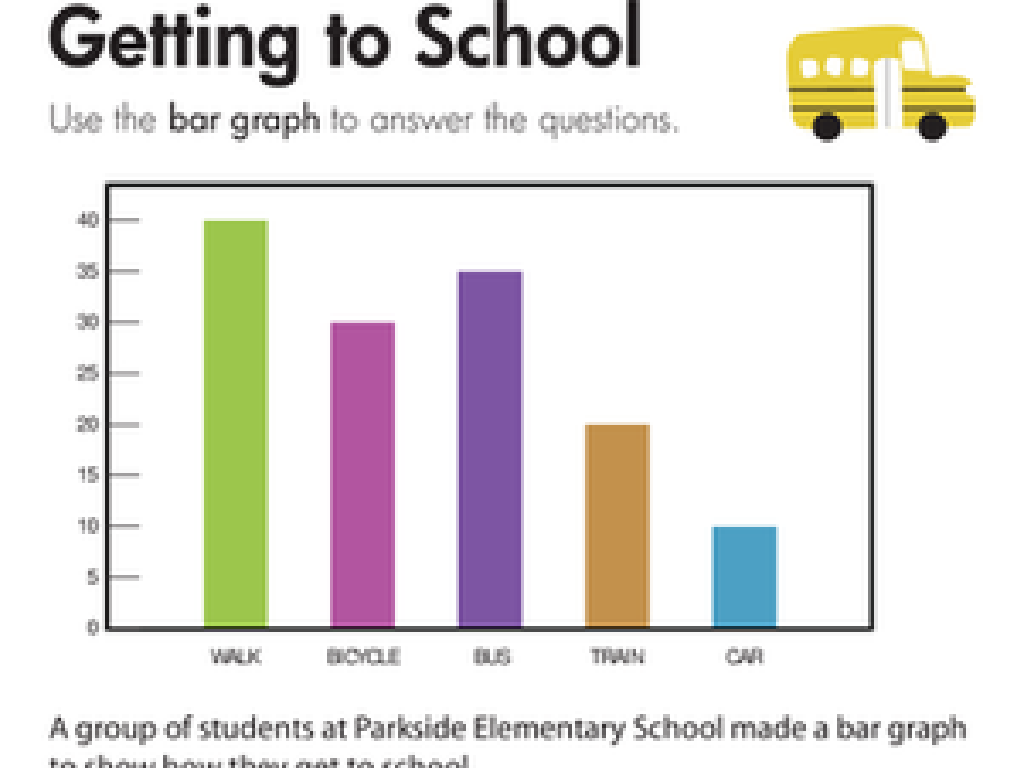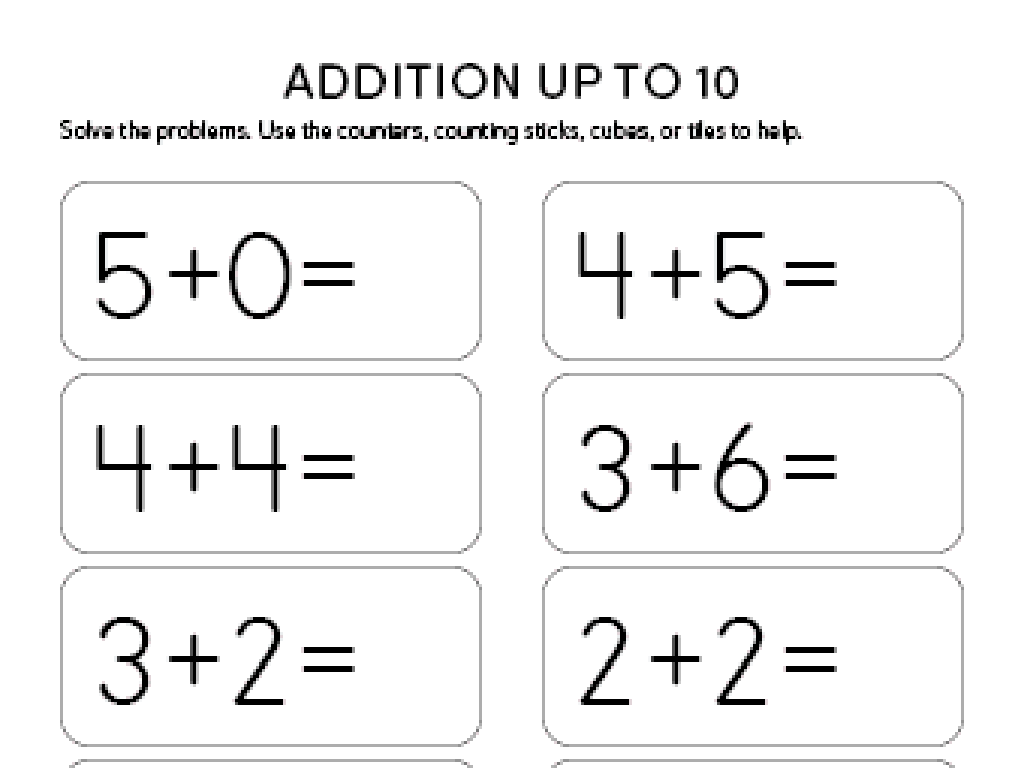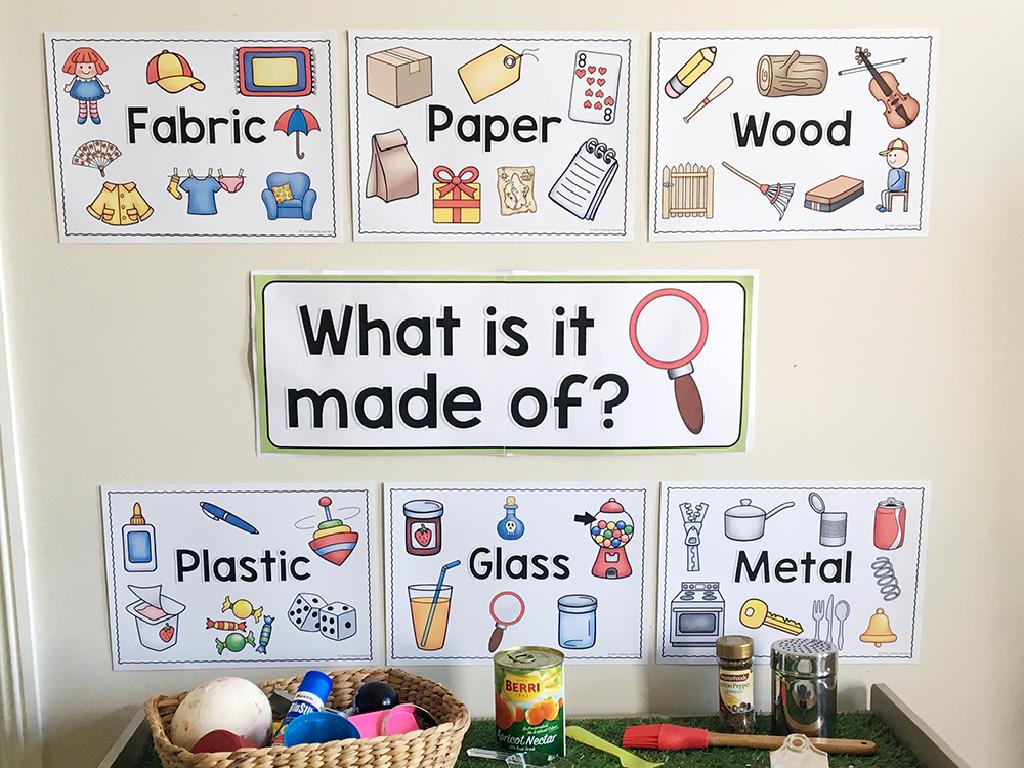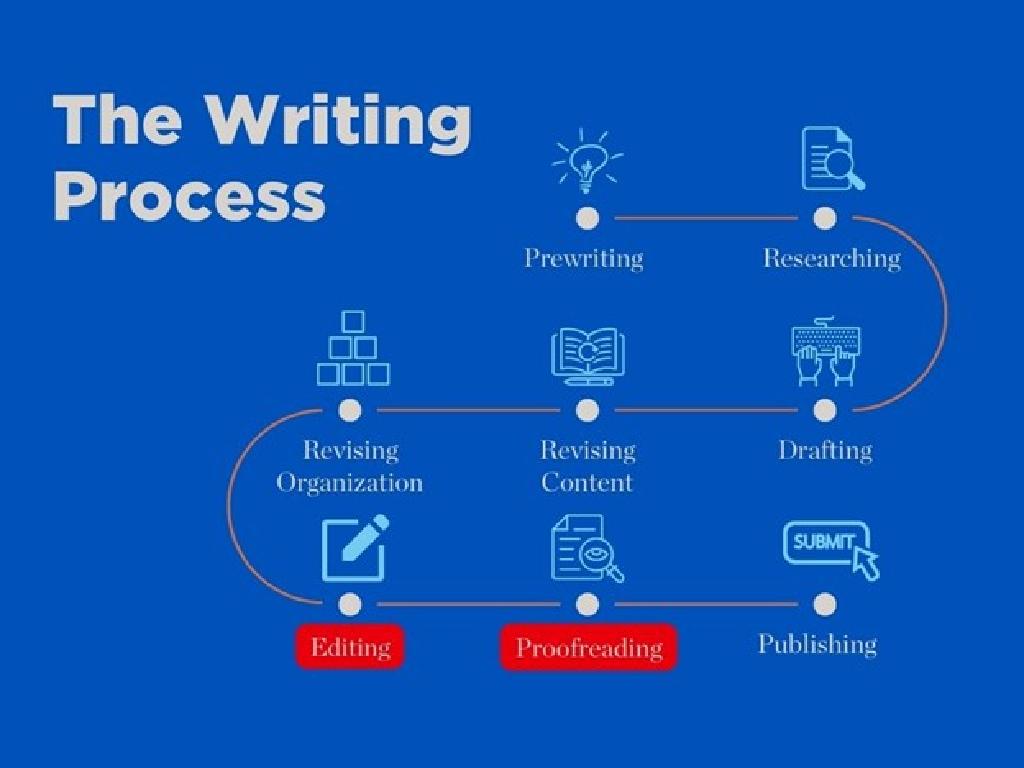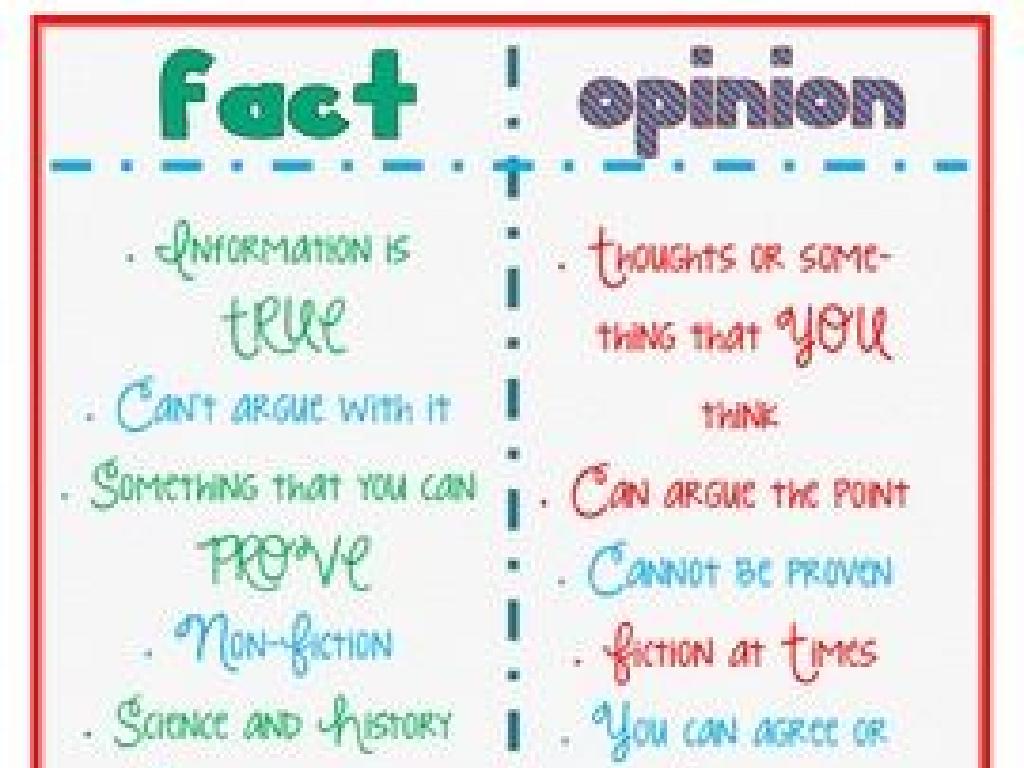Heating, Cooling, And Changes Of State
Subject: Science
Grade: Fourth grade
Topic: States Of Matter
Please LOG IN to download the presentation. Access is available to registered users only.
View More Content
Exploring States of Matter: Heating and Cooling
– Matter makes up our world
– States of matter: solid, liquid, gas
– Solids have fixed shape; liquids flow; gases fill their container
– Heating and cooling affect matter
– Heat makes particles move faster, cold slows them down
– Observing changes of state
– Watch water freeze or boil to see changes in action
|
This slide introduces the concept of matter and its different states, focusing on how heating and cooling can cause matter to change from one state to another. Begin by explaining that everything around us is made of matter. Discuss the three main states of matter: solid, liquid, and gas, and their characteristics. Emphasize how temperature affects the movement of particles in these states, leading to changes such as melting, freezing, boiling, and condensation. Use relatable examples like water changing from ice to liquid to steam. Encourage students to think of other examples and to observe these changes at home or in the classroom.
Exploring States of Matter
– Matter: Mass and space occupier
– Everything around us is matter because it has mass and occupies space.
– Common states: solid, liquid, gas
– Solids have a fixed shape, liquids flow, gases expand to fill containers.
– Discovering plasma: a fourth state
– Plasma is like gas but with charged particles, found in stars and neon lights.
– Understanding matter in our world
|
This slide introduces the concept of matter and its different states to fourth-grade students. Begin by explaining that matter is anything that has mass and takes up space, which includes everything around us. Highlight the three common states of matter solid, liquid, and gas and their characteristics. Introduce plasma as the fourth state of matter, which is less common on Earth but abundant in the universe, such as in stars. Use everyday examples to help students relate to the material, such as ice (solid), water (liquid), and steam (gas). For plasma, mention neon signs or lightning as examples. Encourage students to think of other examples of each state of matter they encounter in daily life.
Exploring Solids: States of Matter
– Solids: Definite shape and volume
– Solids don’t change shape unless forced
– Particles packed closely together
– Like oranges in a bag, they don’t move freely
– Examples: Ice, wood, rocks
– Ice is solid water, wood from trees, rocks from the earth
|
This slide introduces students to the concept of solids within the context of states of matter. Emphasize that solids have a specific shape and volume that do not change unless an outside force is applied. Explain that the particles in a solid are like packed oranges that cannot move freely; they are held together tightly. Use tangible examples like ice, wood, and rocks to help students visualize and understand solids in the real world. Encourage students to think of other solids they encounter daily and how their shape and volume remain constant.
Understanding Liquids
– Liquids have set volume
– They don’t change how much space they take up.
– Particles move within liquids
– They are close together but can slide past each other.
– Liquids adapt to containers
– They don’t have their own shape but fill the space given.
– Common liquid examples
– Think of water, milk, and juice we drink.
|
This slide introduces students to the properties of liquids within the context of states of matter. Emphasize that while liquids have a definite volume, meaning they can’t be compressed into a smaller space, they do not have a fixed shape and will spread out to fill the bottom of their container. Discuss how the particles in a liquid are not as tightly packed as in a solid, allowing them to move around and flow. Use relatable examples like water, milk, and juice to help students connect the concept to everyday life. Encourage them to think of other examples of liquids and how they behave in different containers.
Gases All Around Us
– Gases lack shape and volume
– Gas particles move freely
– Particles are far apart and move in all directions
– Air, helium, and steam are gases
– Helium in balloons, steam from cooking
– Observing gases in daily life
– Notice how gases fill containers of any shape
|
This slide introduces students to the properties of gases as a state of matter. Emphasize that unlike solids and liquids, gases do not have a fixed shape or volume; instead, they take the shape and volume of their container. Explain that the particles in a gas are much farther apart than in solids or liquids, allowing them to move freely and quickly. Use everyday examples like helium in balloons or steam from boiling water to illustrate these concepts. Encourage students to think of other examples of gases they encounter in their daily lives and how these gases behave.
Heating, Cooling, and Changes of State
– Heating adds energy to particles
– Particles move faster when heated
– Cooling takes energy away
– Particles slow down when cooled
– Particles move with energy change
– Faster for solid to liquid to gas, slower for gas to liquid to solid
– State of matter can change
|
This slide introduces the effects of heating and cooling on the movement of particles and how this can lead to changes in the state of matter. When particles are heated, they gain energy and move faster, which can cause a solid to melt into a liquid or a liquid to evaporate into a gas. Conversely, when particles are cooled, they lose energy and move slower, potentially causing a gas to condense into a liquid or a liquid to freeze into a solid. Use examples like water turning to ice when cooled or boiling into steam when heated to illustrate these concepts. Encourage students to think about how the temperature affects the state of matter in their daily lives, such as melting ice cream or condensation on a cold glass.
Changes of State: Matter on the Move
– Melting: Heating turns solid to liquid
– Example: Ice melting into water
– Freezing: Cooling turns liquid to solid
– Example: Water freezing into ice
– Evaporation: Heating turns liquid to gas
– Example: Water disappearing from a puddle
– Condensation: Cooling turns gas to liquid
– Example: Dew forming on grass
|
This slide introduces the concept of changes of state, which is a fundamental part of understanding how matter behaves under different conditions. Melting and freezing are opposite processes involving solids and liquids, while evaporation and condensation involve the transition between liquids and gases. Use everyday examples to help students relate to these concepts, such as ice melting on a warm day or water vapor condensing on a cold surface. Encourage students to think of more examples and discuss how heating and cooling play a role in each process. This will help solidify their understanding of the states of matter and the transitions between them.
Changes of State in Everyday Life
– The water cycle in nature
– Evaporation and condensation are key processes
– Melting ice cream on a hot day
– Heat causes ice cream to change from solid to liquid
– Freezing water into ice
– Cold temperatures in the freezer turn liquid water into solid ice
– Observing states of matter
|
This slide aims to help students connect the concepts of heating, cooling, and changes of state with things they encounter in their daily lives. Discuss the water cycle as a natural example of evaporation and condensation. Explain how heat from the sun or a hot day can cause ice cream to melt, changing from a solid to a liquid. Conversely, when water is placed in a freezer, the lack of heat causes it to freeze into ice, demonstrating a liquid to solid change. Encourage students to think of other examples they’ve seen in their environment where heating or cooling changes the state of matter.
Let’s Experiment: Melting and Freezing!
– Observe melting and freezing
– Gather materials for the experiment
– Ice cubes, salt, string, glass of water needed
– Predict the effect of salt on ice
– Will salt make ice on string melt faster?
– Discuss observations post-experiment
|
This slide introduces a hands-on experiment to help students understand the concepts of melting and freezing. The materials required for the experiment are simple household items: ice cubes, salt, string, and a glass of water. Before conducting the experiment, ask students to predict what they think will happen when salt is added to the ice cube that’s attached to a string. After the experiment, have a discussion about their observations. Did the ice melt faster with salt? Why or why not? This activity will demonstrate the effect of salt on the melting point of ice and provide a practical understanding of phase changes in matter.
Class Activity: State Change Relay
– Relay race to demonstrate state changes
– Stations for Melting, Freezing, Evaporation, Condensation
– Work in teams to explore each state
– Complete tasks and learn how matter changes
|
This interactive class activity is designed to help students understand the concept of state changes in matter through a hands-on relay race. Set up four stations representing melting, freezing, evaporation, and condensation. At the melting station, students could observe ice turning into water. At the freezing station, they could see water solidify into ice. The evaporation station could demonstrate water turning into vapor using a kettle, and the condensation station could show vapor turning back into water on a cold surface. Divide the class into small teams and have them rotate through each station, completing a simple task that illustrates the state change. This could involve taking temperature readings, timing the changes, or recording observations. The goal is for students to actively engage with the material and solidify their understanding of how heating and cooling can change the state of matter.
Conclusion: Heating, Cooling, & State Changes
– Recap: Heating & Cooling effects
– How heat makes things melt and cold makes them freeze
– Daily life examples
– Cooking food (heat) and ice cream melting (cool)
– Share observations
– What have you noticed at home or school?
– Open Q&A session
|
As we wrap up our lesson on heating, cooling, and changes of state, it’s important to review the key concepts. Remind students how adding heat to a solid can melt it into a liquid, and removing heat can freeze a liquid into a solid. Discuss everyday examples such as water boiling into steam or freezing into ice, and how we observe these changes when we cook or when we see the weather change. Encourage students to share any observations they’ve made about heating and cooling in their daily lives, fostering a connection between the lesson and real-world experiences. Finally, open the floor for any questions the students might have or interesting observations they want to discuss, ensuring they have a solid understanding of the material.

